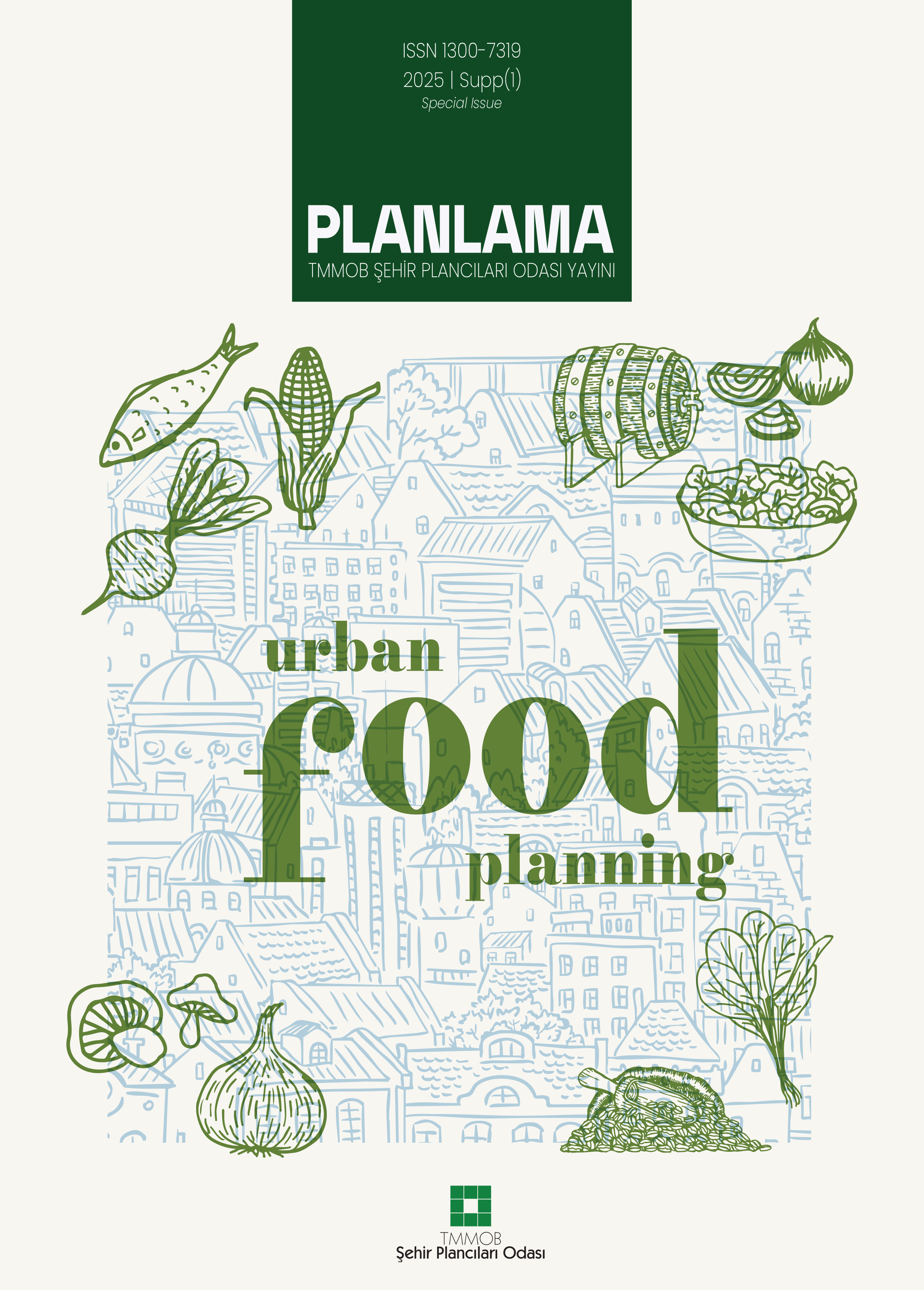Erzurum, Sivas ve Mardin Kentlerinin Morfolojik Yapılarına Kemal Ahmet Aru Araştırmaları Üzerinden Sentaktik Analizlerle Bakmak
Müge Özkan ÖzbekMimar Sinan Güzel Sanatlar Üniversitesi Mimarlık Fakültesi, Şehir ve Bölge Planlama Bölümü, İstanbulBu makale, Kemal Ahmet Arunun morfolojik kent çözümlemelerini temel alarak Erzurum, Sivas ve Mardin şehirlerinin günümüzdeki kentsel büyüme ilişkilerini analiz etmeyi amaçlar. Aru'nun Türk Kenti kitabında sınıflandırdığı Konsantrik Kent, Işınsal Kent ve Lineer Kent tipolojileri üzerine kurulu olan bu çalışma, Arunun 1970−1990 yılları arasında incelediği bu kentlerin büyüme ve yerleşim ızgaralarındaki değişimlerini yeniden değerlendirmeyi hedefler. Özellikle kent merkezlerindeki tarihi çekirdeklerde meydana gelen değişimler, Mekan Dizimi metodu kullanılarak analiz edilmiştir. Bu metodoloji, fiziksel verilerin ötesinde insan davranışlarının ve ilişkilerinin mekansal oluşumlara etkisini anlamaya yardımcı olur. Arunun öngördüğü gelişim şemalarının ve çarşı-pazar alanlarının güncel kentsel örüntüyle ne derece uyumlu olduğu araştırılmıştır. Makale, 30−40 yıl arayla bu kentlerin makro-formlarındaki değişimlerin nedenlerini inceleyerek kent mor-folojisine katkı sağlamayı amaçlamaktadır.
Anahtar Kelimeler: Anadolu kale kent gelişimi, kentsel morfoloji; mekan dizimi metodu.Analyzing the Morphological Structures of Erzurum, Sivas, and Mardin Cities through Syntactic Methods based on Kemal Ahmet Aru's Research
Müge Özkan ÖzbekDepartment of Urban and Regional Planning, Mimar Sinan Fine Arts University, Faculty of Architecture, Istanbul, TurkeyThis article focuses on the morphological urban analyses of Kemal Ahmet Aru and aims to examine the urban growth relation-ships of Erzurum, Sivas, and Mardin in the present day. Based on the typologies classified in Arus Turk Kenti bookConcentric City, Radial City, and Linear Citythis study seeks to re-evaluate the growth and grid pattern changes in these cities, which Aru analyzed between 1970 and 1990. It specifically focuses on the changes in the historical cores that define the city centers. The Space Syntax method is used for analysis, providing an effective framework to understand how these morphological types have maintained or altered their forms. This methodology helps in understanding not only the physical data but also the impact of human behaviors and relationships on spatial formation. The study also investigates whether the development schemes and market areas that Aru foresaw align with the current urban patterns. By comparing the changing macroforms of these cities over 30−40 years, the article aims to contribute to urban morphology by uncovering the reasons for these transformations.
Keywords: Anatolian fortress city development, urban morphology; space syntax method.Makale Dili: Türkçe














